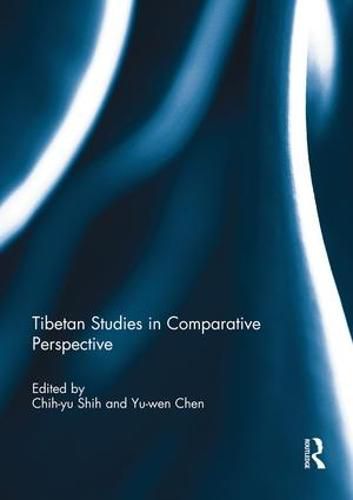Readings Newsletter
Become a Readings Member to make your shopping experience even easier.
Sign in or sign up for free!
You’re not far away from qualifying for FREE standard shipping within Australia
You’ve qualified for FREE standard shipping within Australia
The cart is loading…






Politics, history, and religion have long lent Tibet a glamorous air, particularly in the West. But Tibet can be understood in an astonishingly wide variety of other ways, including linguistic, ecological, environmental and climatological, geographical, geological, economic, biologic, sociologic, medicinal. Tibetan Studies in Comparative Perspective touches on all the elements of the Tibet issue, offering invaluable insight to a wide variety of readers, from specialists to those with a general interest in the topic. By putting readers into the shoes of all the stakeholders, from the Dalai Lama in his home in exile and the various Tibetan exile communities, to decision makers in Beijing, New Delhi, Washington and London, the issues at stake come into bold relief. Furthermore, the book examines the potential opportunities that lay ahead, documents where and how Tibetans have been dispersed and offers a glimpse into the social and political undercurrents sending shudders through this exiled nation. With the chasm between exiles and indigenous Tibetans growing ever-larger, what challenges do Tibetans confront just to remain Tibetan? And how will this shape the future of their political movement? The book provides a timely re-examination of the contemporary predicament of Tibetans, both in and out of Tibet.
This book was published as two special issues of Asian Ethnicity.
$9.00 standard shipping within Australia
FREE standard shipping within Australia for orders over $100.00
Express & International shipping calculated at checkout
Politics, history, and religion have long lent Tibet a glamorous air, particularly in the West. But Tibet can be understood in an astonishingly wide variety of other ways, including linguistic, ecological, environmental and climatological, geographical, geological, economic, biologic, sociologic, medicinal. Tibetan Studies in Comparative Perspective touches on all the elements of the Tibet issue, offering invaluable insight to a wide variety of readers, from specialists to those with a general interest in the topic. By putting readers into the shoes of all the stakeholders, from the Dalai Lama in his home in exile and the various Tibetan exile communities, to decision makers in Beijing, New Delhi, Washington and London, the issues at stake come into bold relief. Furthermore, the book examines the potential opportunities that lay ahead, documents where and how Tibetans have been dispersed and offers a glimpse into the social and political undercurrents sending shudders through this exiled nation. With the chasm between exiles and indigenous Tibetans growing ever-larger, what challenges do Tibetans confront just to remain Tibetan? And how will this shape the future of their political movement? The book provides a timely re-examination of the contemporary predicament of Tibetans, both in and out of Tibet.
This book was published as two special issues of Asian Ethnicity.